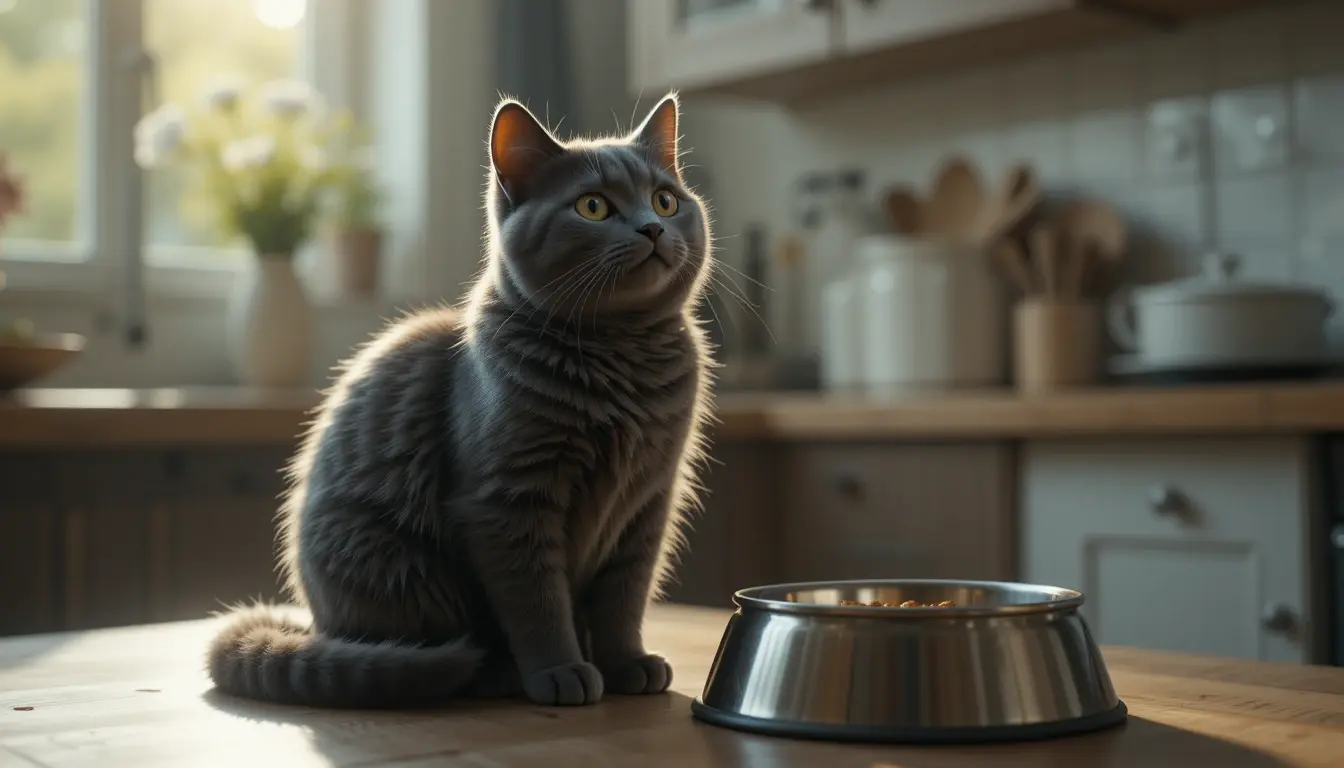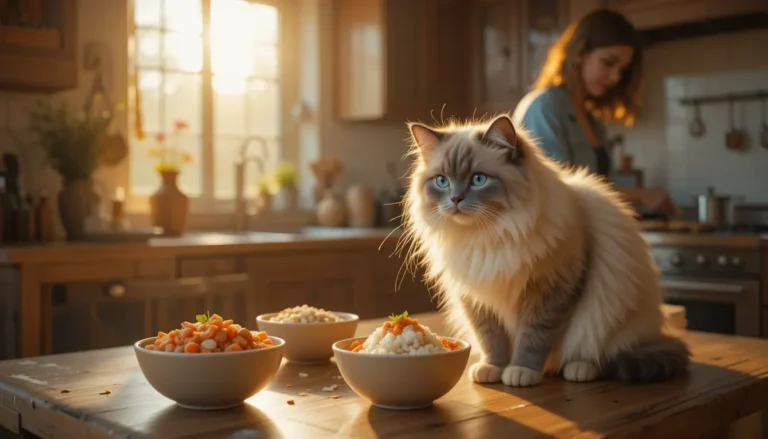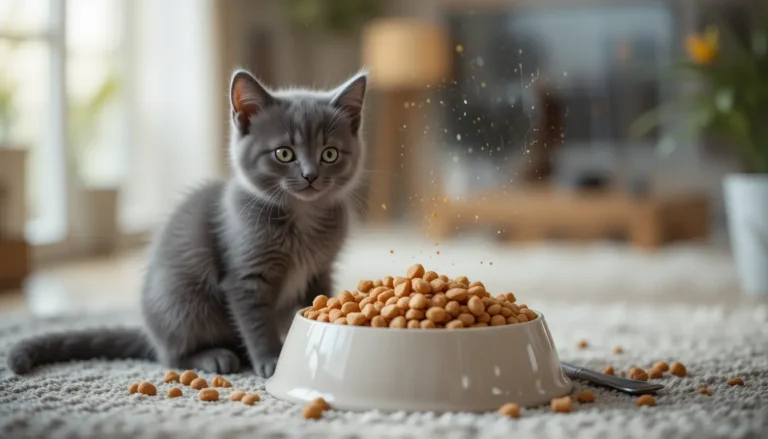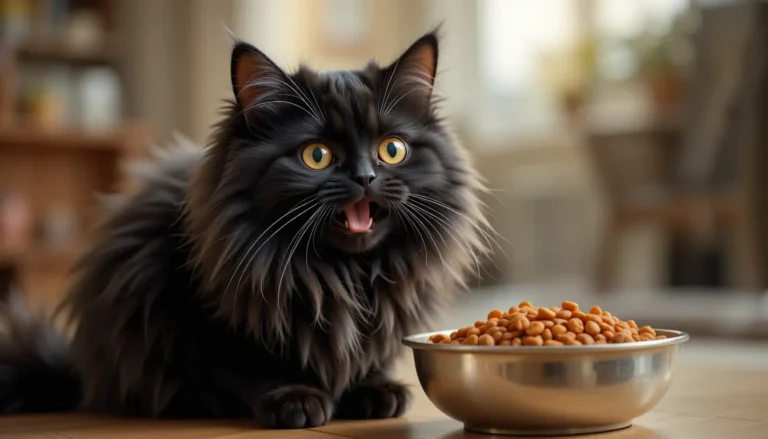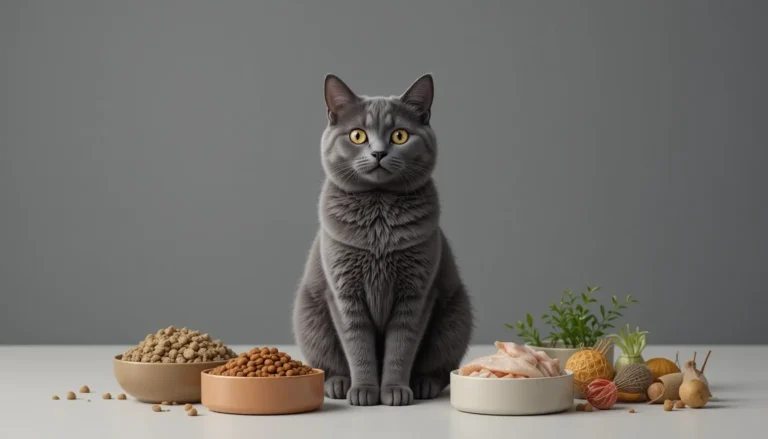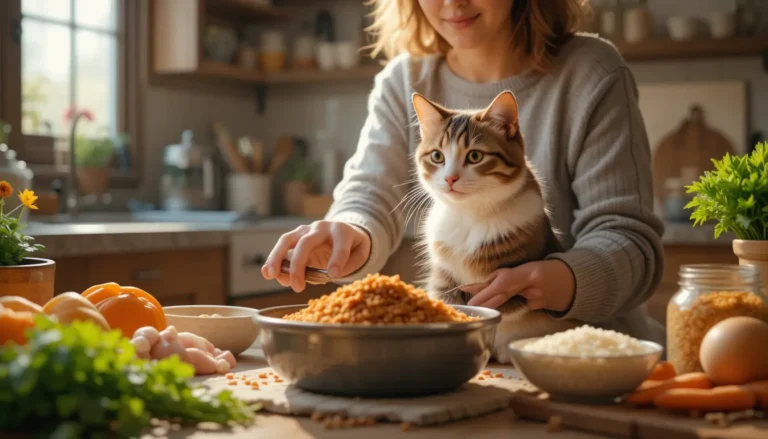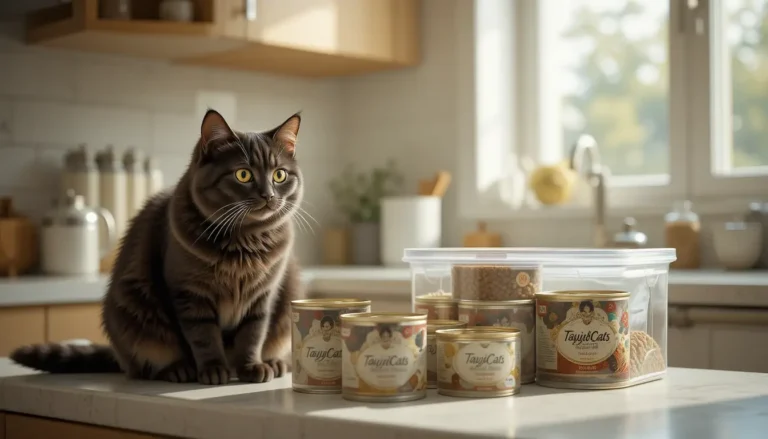How Much Food Does a Cat Need Daily?
Are you feeding your cat too little or too much? It’s a common question, especially for cat parents in hot climates like Dubai and KSA, where a pet’s activity level and eating habits can be affected by the environment. If you’ve ever stood in the pet aisle wondering how much food does a cat need daily, you’re not alone. The answer depends on many factors age, weight, activity level, and even whether you’re feeding wet food, dry food, or a combination.
In this guide, we’ll break down the ideal portion sizes, common feeding mistakes, and how to adjust your cat’s diet for a healthier, happier life all with expert insights from TayyibCats, your trusted source for feline care in the UAE and KSA.
How Much Food to Feed a Cat Per Day? Start with the Basics
On average, a healthy adult cat requires 60–80 kcal per kg of body weight daily. For example, a 4kg cat needs around 250 to 320 calories per day.
According to feeding recommendations from manufacturers:
- 165 to 215g per day for cats weighing 2–3kg
- 265 to 310g per day for cats weighing 4–5kg
- For dry food, that’s 20 to 40g per day for a 2kg cat, and 60 to 80g per day for a 5kg cat
These guidelines work for most indoor cats, but outdoor cats, pregnant cats, or nursing cats will have higher caloric needs.
Whether you’re feeding dry food, wet food, or both, understanding how many grams of cat food per day your pet needs is crucial. Brands like Animonda vom Feinsten Adult (wet) and Purizon Adult Fish (dry) provide precise calorie information on their labels, which you can use to calculate exact servings.
Use a digital kitchen scale for accuracy and reference a feeding chart either on the cat food packaging or the manufacturer’s website.
How Many Ounces of Wet Cat Food Per Day? A U.S. Measure for Precision
If you’re in Dubai or KSA and following U.S. brands, you might see ounces listed. Most adult cats require 5 to 7 ounces of wet food per day, divided into two or three meals. This aligns with three times per day feeding frequency recommended by many veterinarians and pet nutritionists.
Can You Leave Wet Cat Food Out All Day? A Common Mistake
No you should never leave wet cat food out all day, especially in warmer climates like KSA and Dubai. Wet food is prone to bacterial growth, food spoilage, and can cause digestive issues or exposure to disease causing bacteria.
- Serve meals fresh and remove uneaten food within a half hour
- Use an automatic feeder or a refrigerated feeding bowl with a timer if you’re not home
Can I Change My Cat’s Food Per Day? Not Without a Plan
Avoid switching your cat’s food daily unless under guidance from a veterinarian. Sudden changes in texture, flavor, or protein sources can lead to upset stomach, diarrhea, or food refusal.
If your cat has food allergies, consult with a vet about transitioning to a hypoallergenic cat food gradually over 7–10 days.
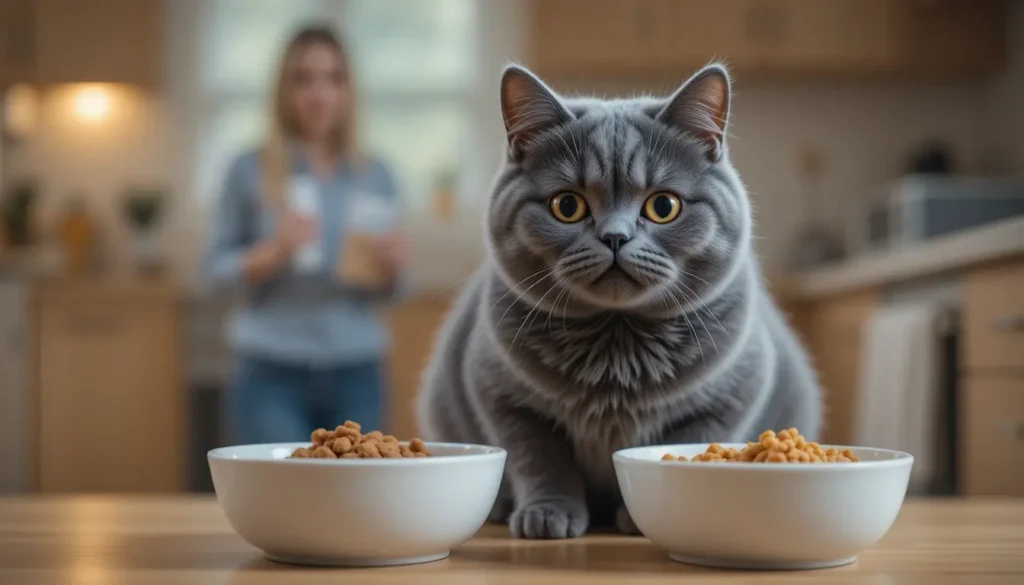
Feeding Needs for Kittens, Pregnant Cats, and Outdoor Cats
- Kittens under five to six months should be fed 3–4 times a day in small portions
- Pregnant cats and nursing mother cats need extra calories often 1.5 to 2 times more than usual
- Outdoor cats and farm cats may require the equivalent of up to 15 mice per day (approx. 300–400 calories)
Each of these life stages benefits from higher-protein wet food, like those found on Zooplus online store, offering specialized diets for different needs.
Dry Food vs. Wet Food vs. Combination Feeding
- Dry food (or kibble) is calorie-dense and easier to store, but it lacks hydrating benefits
- Wet food contains more moisture and is better for kidney health and sensitive stomachs
- Combination feeding allows for balance wet for moisture, dry for dental benefits
Lazy couch potato cats do well with measured dry food, while lively cats may need extra wet food meals to maintain energy.
What If My Cat’s Bowl is Always Empty (or Always Full)?
Free feeding dry food is common, but it makes appetite monitoring difficult and can lead to obesity, diabetes, and other secondary diseases. Instead, use intelligence toys or a slow feeder to serve pre-portioned meals, especially if your cat is eating happily and maintaining weight.
Signs Your Cat’s Diet Needs Adjusting
- Hungry in the middle of the night
- Cleaning bowl but gaining weight
- Not finishing meals but losing weight
- Showing signs of stress and discomfort during meals
If you notice any of these signs, consult a veterinarian or check trusted sources like Pet Expertise page or advice from experts like Dr. Callie Harris, DVM.
Conclusion: How Much Food Does a Cat Need Daily?
So, how much food does a cat need daily? It depends on size, age, weight, activity level, and whether your cat is indoor, outdoor, pregnant, or still a kitten. Always base feeding on calorie content, use reliable feeding recommendations, and make adjustments for your climate especially in places like Dubai and KSA.
Whether using dry food, wet food, or a combination, stick to a consistent feeding routine and measure portions based on your cat’s unique needs. When in doubt, speak to your veterinarian to ensure your cat stays healthy, active, and well fed every day.
FAQs
How much food should a cat be fed per day?
A healthy adult cat typically needs 250–320 calories per day, depending on its weight, age, and activity level. This usually equals 2 sachets of wet food or 60–80g of dry kibble.
Is 2 meals a day enough for a cat?
Yes, feeding a cat twice a day is sufficient for most adults. Just make sure the portion sizes meet their daily calorie needs.
How do I know if I am feeding my cat enough?
If your cat is maintaining a healthy weight, has good energy levels, and finishes meals without begging, you’re likely feeding enough. Watch for signs like weight gain, vomiting, or lethargy to adjust.
How many times should a cat eat a day?
Most cats do well with 2–3 meals a day, but kittens, pregnant, or nursing cats may need more frequent feeding. Stick to a consistent feeding schedule to support digestion and routine.
What is a healthy cat’s weight?
A typical healthy adult cat weighs between 3.5 to 5 kg, depending on breed and body structure. Always consult your veterinarian to determine your cat’s ideal body condition.

